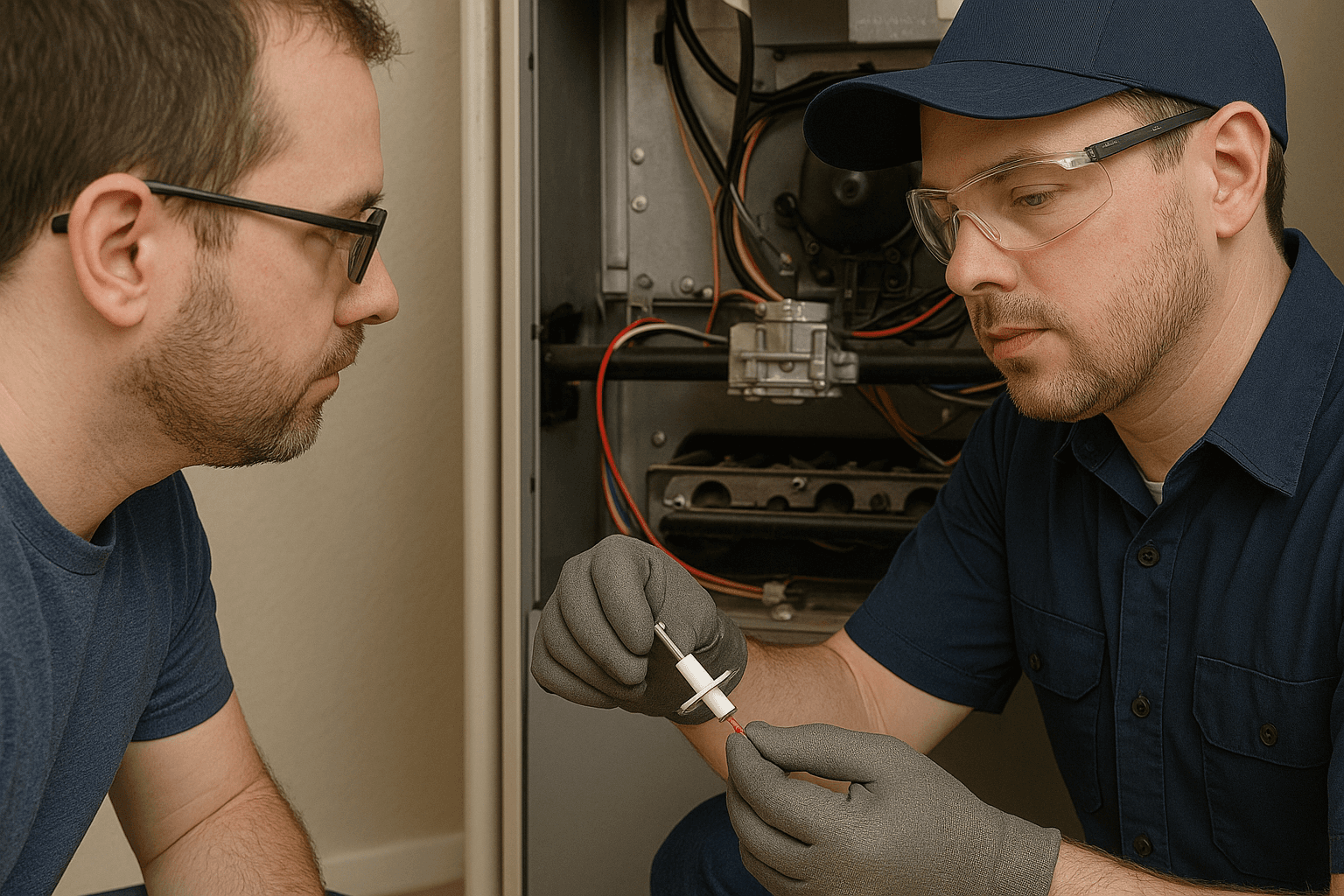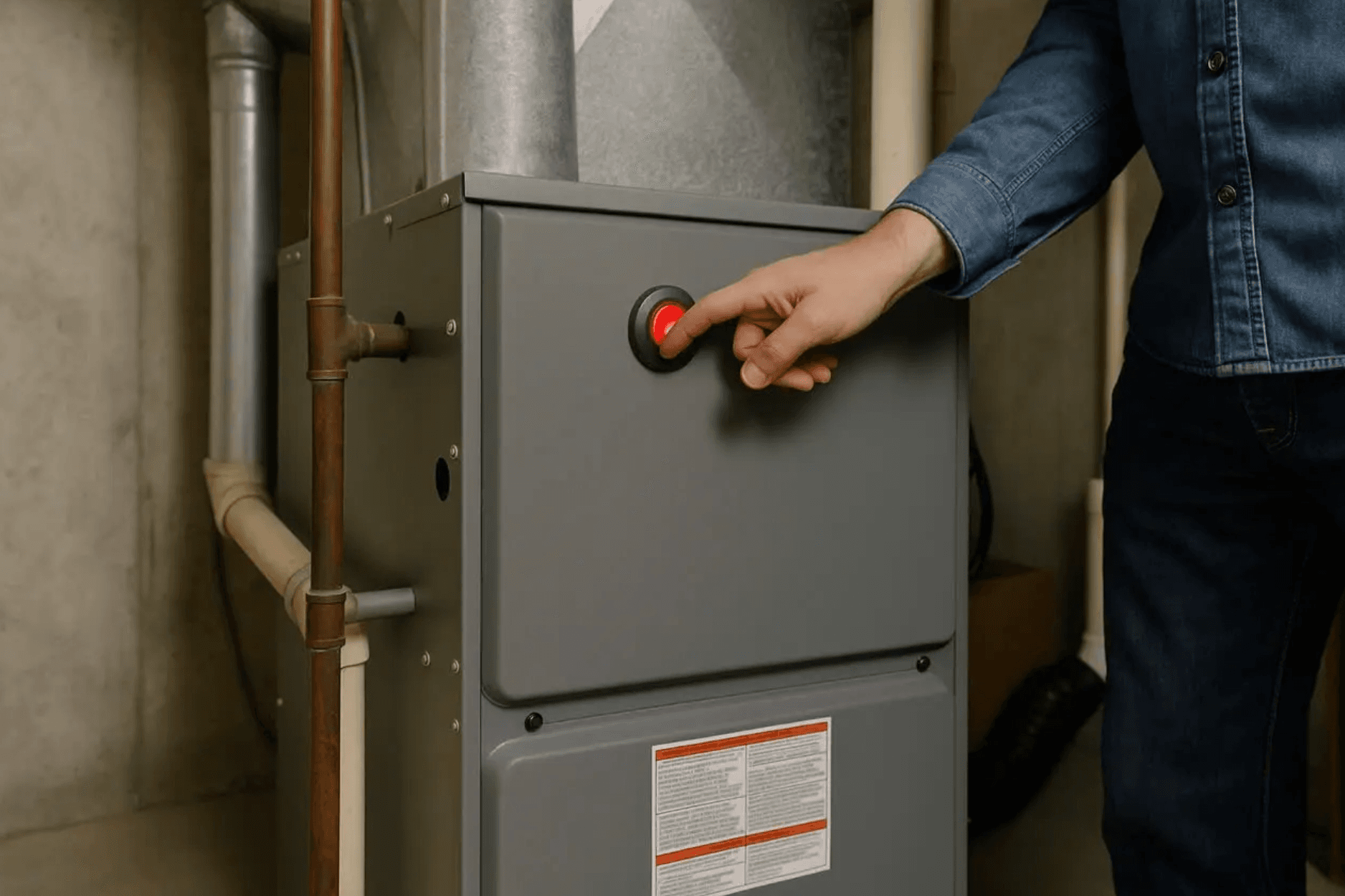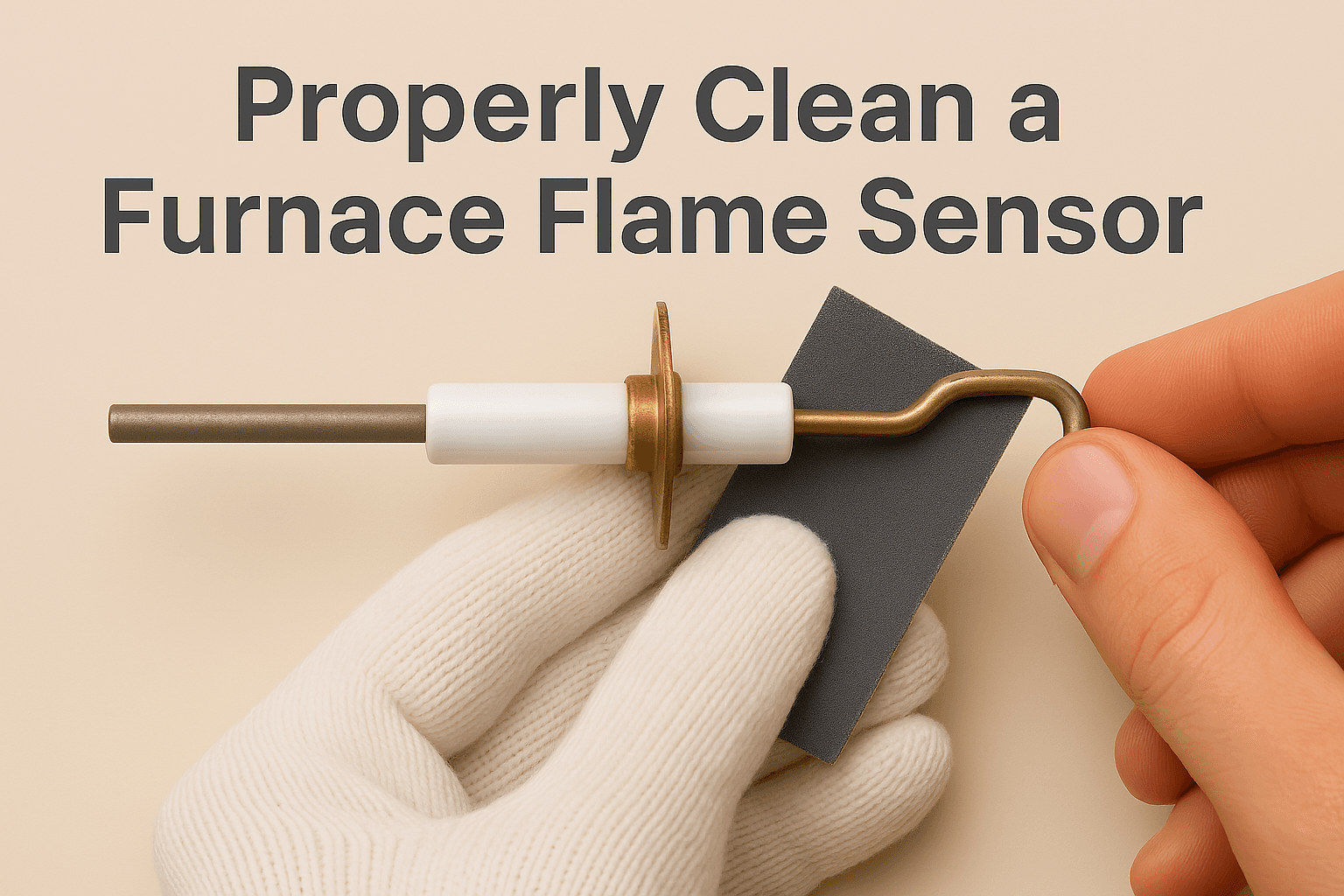How-To Guides
How Much Does It Cost to Replace the Flame Sensor in 2025?
AZparts Team
Updated on November 23, 2025
12 min read
Understanding the cost to replace furnace flame sensor is essential for homeowners looking to maintain their heating systems efficiently in 2025. Flame sensors play a crucial role in furnace safety and performance, so timely replacement can prevent costly repairs or breakdowns. In this article, we will explore the typical price range, factors affecting costs, and how AZParts offers reliable and affordable flame sensors to fit your needs.

1. What is A Flame Sensor?
A flame sensor is a device used to detect the presence of a flame or fire within a system, commonly found in gas furnaces, boilers, and other heating appliances. It plays a crucial role in ensuring safety by confirming that a flame is present when fuel is being supplied, thereby preventing the risk of gas leaks or explosions.
Typically, the sensor works by detecting the ionization of air caused by the flame, sending a signal to the control board to keep the gas valve open. If no flame is detected, the sensor triggers the system to shut off the gas supply immediately. This mechanism not only protects users but also ensures the efficient operation of heating systems.

A flame sensor is a device used to detect the presence of a flame or fire within a heating appliance (Source: AZParts)
2. Flame Sensor vs. Thermocouple
A flame sensor and a thermocouple are both safety devices used to detect the presence of a flame, but they operate in different ways and are suited for different types of systems. A flame sensor is commonly found in modern furnaces and uses electrical current to detect the presence of a flame, allowing for quick and accurate response.
In contrast, a thermocouple is typically used in older systems and works based on temperature changes, generating a small voltage when heated by a flame. While both serve to ensure that gas is only supplied when a flame is present, the flame sensor offers faster response and greater sensitivity. Understanding the differences between these two components helps in choosing the right one for maintaining safe and efficient operation of heating equipment.

A flame sensor and a thermocouple are both safety devices used to detect the presence of a flame (Source: AZParts)
3. Signs of a Bad Flame Sensor Symptoms in Your Furnace
When a flame sensor in your furnace starts to fail, it can lead to a range of noticeable issues that affect both safety and efficiency. Recognizing these signs early can help prevent more serious problems and costly repairs. Below are some common symptoms of a bad flame sensor:
- Flue Line Corrosion: Corrosion on the flue line may indicate poor combustion, which can result from a faulty flame sensor failing to detect and regulate the flame properly.
- High Energy Bills: A malfunctioning flame sensor can cause the furnace to operate inefficiently, making it work harder and longer than necessary, which leads to increased energy consumption.
- Yellow Flames: Instead of a steady blue flame, a yellow flame can signal incomplete combustion, often caused by a sensor that is not correctly monitoring the flame.
- Furnace Short Cycling: Frequent on-and-off cycling of the furnace may occur when the flame sensor fails to confirm the flame, causing the system to shut down prematurely for safety.
- Dirt on the Sensor: Accumulated dirt or soot on the flame sensor can block its ability to detect the flame, leading to system errors or shutdowns.
- Visible Damage: Any visible cracks, discoloration, or wear on the flame sensor itself can impair its function and indicate the need for replacement.
- Unusual Odour: A strange smell coming from the furnace could point to incomplete combustion, which may result from a sensor failing to maintain proper flame control.
Old Age: Like any component, a flame sensor can wear out over time. If the sensor is several years old, its performance may decline even if there are no obvious signs of damage.

Early recognition of a failing flame sensor can help prevent more serious problems and costly repairs (Source: AZParts)
4. Cost Factors for Replacing a Flame Sensor
Replacing a flame sensor involves several cost considerations, including the price of the part itself, labor charges for installation, and any additional expenses that may arise during the process.
4.1. Price Range for a New Flame Sensor
The cost of a new flame sensor typically ranges from around $7 to $16, depending on the brand, compatibility, and quantity in the package. AZParts offers a variety of reliable and affordable replacement options suited for different furnace models. Below are some examples of popular flame sensors available at AZParts, along with detailed descriptions to help guide your selection:
- 0130F00010 Furnace Flame Sensor: This high-quality replacement sensor is designed to fit Goodman and Amana furnaces. It is compatible with several part numbers. For those who need multiple replacements or wish to stock spares, the 5-pack option is available for $14.04, discounted from the original price of $15.09. This sensor offers dependable performance and is ideal for ensuring your furnace operates safely and efficiently.

- 62-23543-01 Furnace Flame Sensor – Pack of 4: This pack includes four high-quality sensors compatible with a wide range of furnace brands, such as Rheem, Ruud, WeatherKing, Thermal Zone, and DuroGuard. It is especially suitable for users looking to replace sensors in either residential or commercial settings. Priced at $15.39, this product is easy to install and helps maintain the reliability and performance of your heating system.

The 62-23543-01 Furnace Flame Sensor – Pack of 4 is priced at $15.39 (Source: AZParts)
- 69W43 Furnace Flame Sensor: Designed to upgrade the performance of heating systems, this flame sensor is compatible with Lennox, Armstrong, and Ducane furnaces. It replaces part numbers 69W4301, LB-74940B, and LB74940B. The sensor ensures optimal safety and efficient operation, making it a dependable choice for home heating maintenance. It is currently available for $14.04 at AZParts.

The 69W43 Furnace Flame Sensor is currently available for $14.04 at AZParts (Source: AZParts)
4.2. Labor Charges
Labor costs for replacing a flame sensor can vary depending on your location and the service provider. On average, professional HVAC technicians may charge between $75 and $150 for diagnostic and replacement services. The final cost may be higher if the technician needs to perform additional inspections or repairs during the visit.

Labor costs for replacing a flame sensor can depending on the location and service provider (Source: AZParts)
4.3. Other Potential Costs
In some cases, additional costs may arise beyond the price of the part and labor. These can include service call fees, especially if the replacement is done outside regular business hours, or costs related to cleaning the furnace or replacing other worn-out components. If the flame sensor issue has caused damage to other parts of the system, further repairs or part replacements may also be required, increasing the total expense.

In some cases, additional costs will arise more than you originally expected (Source: AZParts)
5. How to Replace a Flame Sensor?
Replacing a flame sensor is a relatively simple process that can restore proper function to your furnace. However, it requires careful attention to safety and the correct handling of furnace components. If you feel confident working with HVAC parts, you can follow the steps below to remove the old sensor, install the new one, and test the system to ensure everything works as expected.
5.1. Removing the Old Flame Sensor
Before beginning any work, you should turn off the power supply to the furnace and shut off the gas to ensure complete safety. Once the system is powered down, you can proceed with removing the old flame sensor.
Here are the basic steps:
- Locate the flame sensor, which is usually mounted near the burner assembly inside the furnace.
- Use a screwdriver to carefully remove the mounting screw or screws that secure the sensor in place.
- Gently pull the sensor out of its bracket and disconnect the wire attached to it.
At this stage, you can inspect the old sensor for dirt, corrosion, or signs of damage. If cleaning doesn’t solve the problem, replacement is the best option.

Firstly, you should turn off the power and shut off the gas to ensure complete safety (Source: AZParts)
5.2. Installing the New Flame Sensor
Once the old sensor is removed, installing the new one is straightforward. Make sure you have the correct replacement part that matches your furnace model.
To install the new sensor:
- Attach the wire from the furnace to the new flame sensor securely.
- Insert the sensor back into the same position where the old one was mounted.
- Use the screwdriver to fasten the mounting screw and ensure the sensor is firmly in place.
It is important to avoid touching the metal part of the new sensor with bare hands, as oil or dirt can affect its ability to function properly.
_1748257477.png)
After removing the old flame sensor, you can install the new one (Source: AZParts)
5.3. Testing the New Flame Sensor
After installing the new flame sensor, the final step is to test whether it is working correctly. Begin by restoring power to the furnace and turning the gas supply back on.
To complete the testing process:
- Set your thermostat to a temperature that will trigger the furnace to start.
- Observe the ignition process to ensure the burners light up and remain on.
- Monitor the furnace for a few minutes to confirm that it is not short cycling or shutting down unexpectedly.
If everything operates normally, the new flame sensor is functioning as intended. If the furnace continues to have issues, further inspection by a licensed HVAC technician may be necessary.

You need to observe the ignition process to ensure the burners light up and remain on (Source: AZParts)
6. Maintenance Tips to Prevent Flame Sensor Issues
Proper maintenance of your flame sensor can extend its lifespan and ensure your furnace operates safely and efficiently. Below are several useful tips to help prevent common issues with flame sensors:
- Clean the flame sensor regularly: Over time, carbon buildup and dust can accumulate on the sensor’s metal rod, affecting its ability to detect the flame. Cleaning the sensor with a fine emery cloth or steel wool every few months helps remove these deposits and maintain proper function. Always remember to turn off the power and gas supply before cleaning.
- Schedule annual furnace inspections: Having your furnace inspected by a qualified HVAC technician at least once a year ensures that all components, including the flame sensor, are in good condition. A technician can clean, test, and replace any worn-out parts before they lead to system failure.
- Replace worn or damaged flame sensors: If the flame sensor shows signs of corrosion, cracks, or wear even after cleaning, replacement is necessary. Continuing to use a faulty sensor may cause the furnace to shut off unexpectedly or fail to start.
- Check for loose connections: Electrical connections can become loose over time due to vibrations or temperature changes. It’s important to inspect the sensor’s wiring periodically and tighten any loose connections to avoid intermittent signal issues.
- Keep the furnace area clean: Dust and debris near the furnace can be drawn into the system and settle on internal components, including the flame sensor. Regularly vacuuming around the unit helps reduce this risk and supports better airflow and combustion.

Cleaning the flame sensor regularly can extend its lifespan and ensure your furnace operates efficiently (Source: AZParts)
7. When should you Call a Professional HVAC Technician?
If your furnace continues to malfunction after cleaning or replacing the flame sensor, it may indicate a deeper issue such as a faulty control board or gas valve. In these cases, a professional HVAC technician can accurately diagnose the problem and ensure safe, effective repairs. It's especially important to seek expert help if you're not comfortable working with gas or electrical components, as incorrect handling can pose serious safety risks.

In these cases, you have to call a Professional HVAC Technician (Source: AZParts)
You should also call a technician if the furnace frequently short cycles, won’t stay lit, or shows unusual signs like strange noises or smells. Additionally, for systems under warranty, professional service may be required to maintain coverage. Prompt expert attention helps protect your furnace and ensures it operates safely and efficiently.
Replacing your furnace flame sensor doesn’t have to be expensive or complicated. By knowing the cost to replace furnace flame sensor and choosing trusted parts from AZParts, you can ensure your heating system stays safe and efficient all year round. Visit AZParts today to find the perfect flame sensor replacement at a great price and enjoy peace of mind with your furnace’s performance.
Contact Information:
8 The Green, Ste A, Dover, Delaware 19901-3618, United States
Read more:
Furnace
Further Reading
Further Reading





